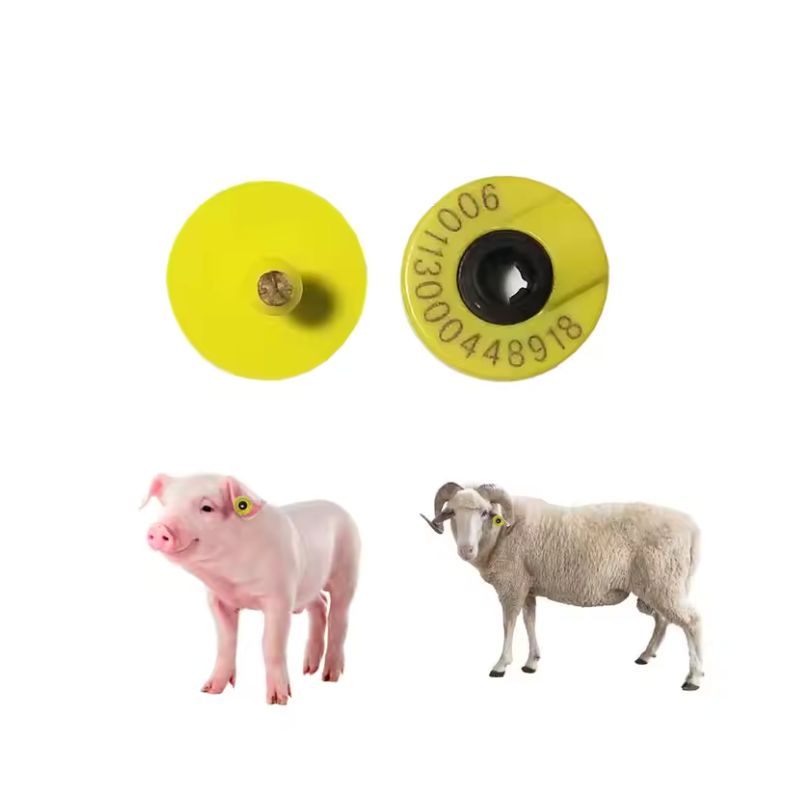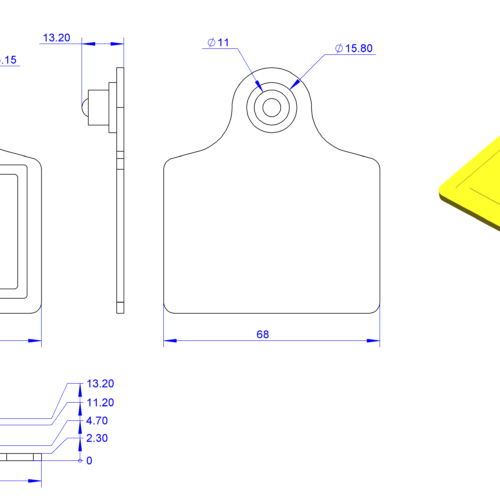Comprehensive Guide to Pig Ear Tags: Essential Identification Tools for Swine Farmers
Ear Tags Pigs tags are essential identification tools for livestock management, particularly in the swine industry. These tags help track and manage pigs and ensure compliance with USDA regulations. With the increasing need for effective animal identification, investing in high-quality ear tags is a must for any pig farmer. This guide explores the benefits of pig ear tags, their features, and why they are worth purchasing.
Benefits of Ear Tags Pigs Tags
Pig ear tags enhance swine management in many ways. Firstly, they provide a visual identification method that is easy to read and understand. Each tag can be printed with a unique identification number, thus allowing farmers to keep accurate livestock records. This is especially important for breeding stock, as it helps track lineage and health history. Moreover, RFID ear tags offer electronic identification, enabling quick access to an animal’s information with a scanner and improving farm operations. In addition, using ear tags that meet USDA requirements ensures that farmers comply with regulations regarding animal traceability. This is vital for maintaining the health and safety of livestock, particularly when transporting animals across state lines. By utilizing these tags, farmers can enhance their record-keeping practices and ensure they are prepared for any inspections or audits.
Features of Swine Ear Tags
1. Durable and Weather-Resistant Design
Swine ear tags are specifically designed to withstand the rigors of farm life. They are made from high-quality materials, which makes them resistant to wear and tear, ensuring they remain intact throughout the pig’s life. The size and shape of the Ear Tags Pigs tags are optimized for comfort, minimizing the risk of injury to the animal. Furthermore, they are designed to be weather-resistant, making them suitable for outdoor environments where pigs are often raised.
2. Variety of Identification Options
Farmers can choose from a wide selection of pig ear tags that cater to their specific needs. Options include blank tags for custom printing, RFID tags for electronic identification, and traditional numbered tags. This variety allows farmers to select the best option for their management style and operational requirements. For instance, RFID tags can store extensive information about the animal, including health records and breeding history. This information can then be accessed quickly using a reader.
3. Easy Application and Removal
Applying Ear Tags Pigs tags is a straightforward process that can be done with a tagger tool, which ensures a quick and efficient application. The tags are designed for easy placement, thus minimizing stress for the animal during the tagging process. In cases where removal is necessary, the Ear Tags Pigs tags can be taken off without causing harm to the pig, which makes them a practical choice for livestock management.
Technical Specifications and Usage Instructions
When selecting pig ear tags, you should consider the following technical specifications:
| Feature | Description |
| Material | Durable, weather-resistant plastic |
| Size | Standard sizes available for different breeds |
| Identification Type | Visual (numbered) and electronic (RFID) |
| Compliance | USDA approved for traceability |
| Application Method | Requires a tagger for easy application |
Usage Instructions
Preparation: Make sure that the tagger is clean and in good working condition.
Placement: Hold the pig securely and position the tag in the desired location on the ear.
Application: Use the tagger to pierce the ear and secure the tag in place.
Record Keeping: Immediately record the identification number associated with the tag for future reference.
Environmental Impact and Compliance
The production of pig ear tags is designed to minimize environmental impact. Consequently, many manufacturers adopt sustainable practices in their production processes, ensuring that the materials are recyclable. Additionally, by using RFID technology, farmers can reduce paper waste that is associated with traditional record-keeping methods. Compliance with USDA regulations is another critical aspect of using pig ear tags. These tags are designed to meet the standards the USDA sets, ensuring that farmers can maintain accurate records and traceability for their livestock. This compliance benefits the farmer and contributes to the overall health and safety of the agricultural industry.
Conclusion
Investing in high-quality pig ear tags is essential for effective livestock management. Due to their durable design, variety of identification options, and ease of use, these tags significantly benefit pig farmers. Moreover, by ensuring compliance with USDA regulations and enhancing record-keeping practices, ear tags are a valuable tool for any swine operation. Therefore, don’t miss the opportunity to improve your farm’s efficiency and traceability—consider purchasing pig ear tags today!
























